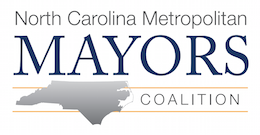Seattle may create transportation taxing district (Seattle Times)
Facing a long list of pricey transportation projects, the Seattle City Council may create a new citywide transportation taxing district that could lead to higher property and sales taxes, higher car-tab fees and someday maybe even local toll roads.
The new taxing district, which would follow city boundary lines, could generate millions of dollars in new taxing authority.
Creating the district wouldn’t require public approval, but raising sales and property taxes would.
Once a transportation district is in place, the council could raise car-tab fees by up to $20 without a public vote to fund bike and pedestrian improvements and to pay for road maintenance.
The council already is considering raising existing parking taxes to design and pay for major projects like the sea-wall replacement.
“I’d like to look at all of the options and see what the implications are,” said Councilmember Tom Rasmussen, Transportation Committee chairman.
As for tolling city streets, Rasmussen said, there are no specific proposals. He acknowledged the subject would be “very, very controversial.”
The Legislature passed a law in 2008 allowing cities to set up “transportation benefit districts.”
Edmonds, Des Moines, Lake Forest Park, Olympia and Shoreline are among the cities that already have done so.
“What I hear from people in the community … is that everyone wants more sidewalks, more crosswalks, greater safety. And people also say the public will pay for it,” Rasmussen said.
“We’re in the middle of a deep recession, and I don’t know whether the voters would be willing to tax themselves … That’s why we want to have a review,” he said.
The proposed Seattle taxing district would be governed by the City Council and overseen by an advisory committee.
The tax proposals are a variation on taxes Mayor Mike McGinn proposed in July.
The mayor wanted to raise car-tab fees by $20 and increase the parking tax from 10 percent to 15 to 20 percent.
The council’s proposal would raise the parking tax to 12.5 percent.
Tuesday, the mayor was supportive of using a new district to raise taxes.
“The broad outline of what Rasmussen is talking about — there’s alignment here,” said McGinn. “What I hear in the community is that it’s a governmental basic: We should take care of our streets and bridges.
“It’s the big projects that gather a lot of attention, … but we have to make sure we are taking care of the basics. That’s what this is about,” McGinn said.
Seattle has several big, unfunded transportation expenses coming up. This year alone, the city’s Department of Transportation is facing an $8 million shortfall.
The city also needs to come up with $235 million to replace the city’s crumbling downtown sea wall; $57 million for its portion of the Mercer Street West construction project; and $122 million for waterfront improvements related to the Alaskan Way Viaduct replacement.
Plus, the city promised King County this summer it would contribute $15 million toward a new South Park Bridge, and it has big gaps in funding its pedestrian and bicycle master plans.
Rasmussen’s proposal also would postpone for at least a year a public vote on a property-tax increase to pay for the sea wall.
McGinn proposed in January asking voters to pay more property taxes to jump-start sea-wall replacement.
The council says it can use parking-tax revenue for design work on the sea wall, delaying the ballot measure.
Seattle’s new tax proposals come four years after voters approved a $365 million, nine-year “Bridging the Gap” property-tax levy for street maintenance, sidewalks, traffic signals and trails.
Emily Heffter: 206-464-8246 or eheffter@seattletimes.com
By Emily Heffter
Seattle Times staff reporter


